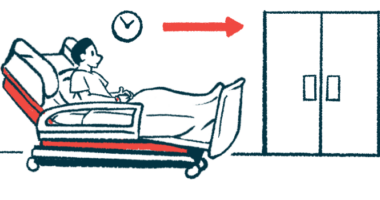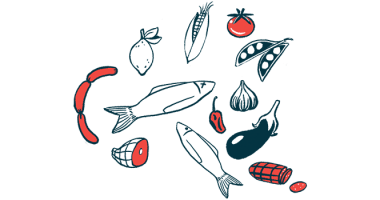Liraglutide Helps Control Excessive Hunger, No Impact on Weight: Phase 3 Trial
All participants were given a personalized diet and exercise program for the study

Treatment with liraglutide along with an exercise and diet program eased excessive hunger in children and adolescents with Prader-Willi syndrome (PWS), but had no effects on body mass index (BMI) and other weight-related measures, according to the findings of a Phase 3 trial.
The study, “Liraglutide for Weight Management in Children and Adolescents With Prader–Willi Syndrome and Obesity,” was published in The Journal of Clinical Endocrinology & Metabolism.
Excessive appetite, or hyperphagia, is a hallmark symptom of PWS, leading to overeating and obesity.
Diet and exercise coupled with restrictions to food access is a mainstay strategy to control weight in PWS patients. Restricting food can be difficult to implement and lead to behavioral challenges, however.
Liraglutide is marketed as Saxenda by Novo Nordisk as a weight management medication, given once daily. It acts on GLP-1 receptors to change the activity of nerve cells associated with eating behavior, ultimately promoting weight loss.
Effect of liraglutide on weight loss
Considering its reported benefits in regulating appetite in adults and adolescents, an international team of researchers conducted a Phase 3 clinical trial to see if it was effective and safe for weight loss in children (age 6–11) and adolescents (age 12–17) with PWS.
The study (NCT02527200), sponsored by Novo Nordisk, was conducted at 20 clinical sites in multiple countries.
Participants were randomly assigned to liraglutide or a placebo, administered once a day as a subcutaneous (under the skin) injection in the abdomen, thigh, or upper arm, for 16 weeks. Those in the liraglutide group continued to receive the medication for 36 more weeks and the patients were followed for two weeks after the end of the treatment (until week 54).
Liraglutide was administered at 0.6 mg and increased each week until it reached the maximum tolerated dose or the target dose of 3 mg. Children whose weight was less than 45 kg (about 99 pounds) had a starting liraglutide dose of 0.3 mg and a maximum dose of 2.4 mg.
All the participants received a personalized diet and exercise program for the study’s duration. Half the children (50%) and 45.2% of adolescents received growth hormone.
The study’s main efficacy goals were changes in BMI standard deviation score (SDS) from the study’s start (baseline) to week 16 and week 52 (one year). BMI is a measure of body fat. BMI SDS is a way to assess the amount of overweight in childhood, reflecting the deviation of BMI from the average population of similar age and sex.
In total, 32 adolescents (20 given liraglutide, 12 a placebo) and 24 children ( 17 given liraglutide, seven a placebo) participated in the trial. One adolescent was excluded from the final analysis as their data were lacking.
The 3 mg starting dose of liraglutide was reached by 94.7% of adolescents and 58.8% of children. Of those assigned to a placebo, 91.7% of adolescents and 71.4% of children reached the 3.0 mg dose. Among children with weight below 45 kg, five assigned to liraglutide reached the target 2.4 mg dose.
At baseline, the mean BMI SDS in adolescents assigned liraglutide was 3.35 and 4.02 for those on a placebo. In children, BMI SDS was 4.89 for the liraglutide group and 4.17 for the placebo group. No statistically significant changes in BMI SDS were found between baseline and week 16 or at the end of the study in the adolescents and children.
Also, the number of participants with a decrease of 5% or higher in BMI — a secondary goal — did not differ between the liraglutide and placebo groups at any of the periods analyzed.
Other body weight-related parameters did not change either. In contrast, hyperphagia total and drive score were significantly reduced at week 52 in adolescents on liraglutide compared to those given a placebo. This comparison did not control for type 1 error (false positive).
No changes were observed for vital signs, blood sugar parameters, and fasting lipids (fats). The exception was fasting blood plasma glucose (sugar), which was reduced in adolescents on liraglutide compared to placebo at week 16.
Side effects of liraglutide
The most common side effects were gastrointestinal complications of mild to moderate severity and were more frequent in the patients given liraglutide compared to the placebo — 55% vs. 41.7% in adolescents, and 58.8% vs. 28.6% in children.
Diarrhea and abdominal pain were the most common complaints, but more than half of diarrhea events were reported by one child. Only one serious side effect of cholelithiasis (gallstones in the gallbladder) was considered likely linked with liraglutide.
Two adolescents on liraglutide had an episode each of clinically significant low blood sugar levels (hypoglycemia) and one child had severe hypoglycemia, but did not show any cognitive impairment linked to it.
There were no reports of suicidal thoughts and no participant scored 15 or higher (worse) in the Patient Health Questionnaire-9 (PHQ-9), a measure of depression.
Liraglutide also had no evident impact on growth rate or puberty development, nor did it lead to clinically relevant changes in blood work.
Anti-liraglutide antibodies, a reaction of the immune system against the medication, were detected in four patients (10.8%) during a single visit — two cases at week 16 and two at week 54. Two children had anti-liraglutide antibodies at two visits.
“The safety profile of liraglutide in our trial was overall consistent with that observed in other populations,” the researchers wrote.
The scientists did note the small number of participants, which may help explain the lack of statistically significant differences, as a limitation of the study.
Liraglutide had no significant impact on easing BMI SDS in children and adolescents with PWS and obesity, when given along a diet and exercise program, the researchers noted. An apparent “improvement in hyperphagia (total score and drive score) in adolescents was seen, which is a key characteristic of PWS,” they said, adding more research was needed to “investigate the potential of GLP-1 receptor agonists in PWS.”







